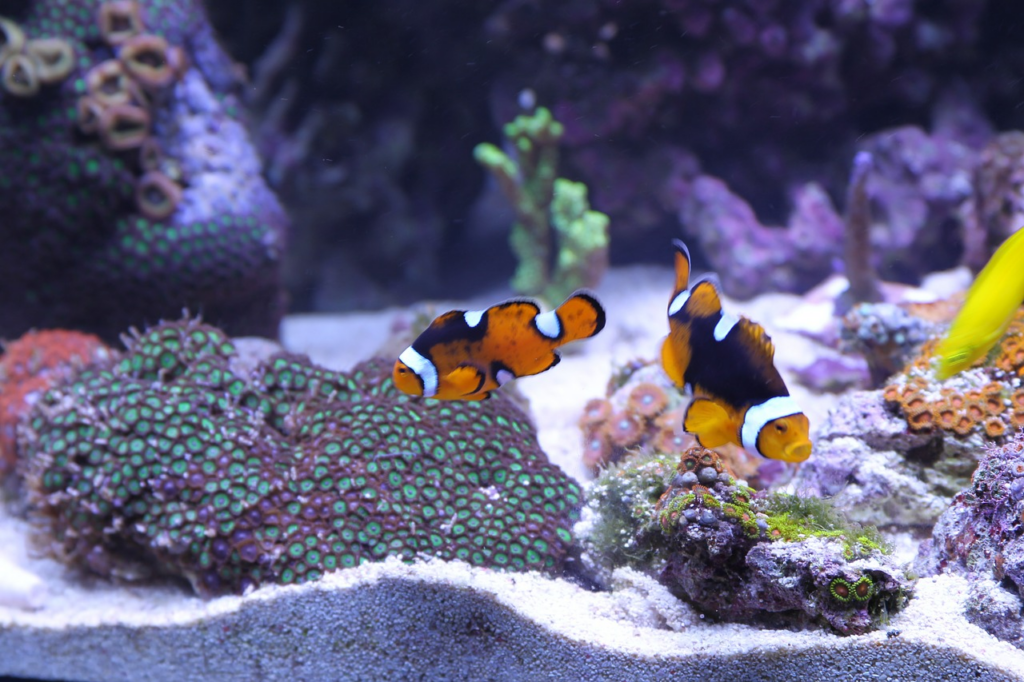
Are you an admirer of the mysterious underwater world? Have you gone diving on a vacation and saw some of the most amazing marine life, and found yourself wishing you could stay there forever? Well, you can have the second-best thing when you recreate it by setting up a reef tank! You’ll have a constant source of relaxation in the comfort of your home. You have the technology to thank for having this option available and easy to achieve on your own. Wondering how to get started? Here are the things you’ll need to have a well functioning reef tank.
A Plan
Before you go into action, you need to make a plan so it is executed as smoothly as possible. Think about what you want your reef tank to look like and what you want to have inside. Go back to the reason why you’re setting it up in the first place, what caught your attention about it, and paint an image in your head. You can browse through the different looks for some inspiration or consult this useful guide for saltwater aquarium details, with everything a beginner in the world of reef tanks like yourself might need. If you’re setting this up because there’s a certain fish or coral type that caught your eye, you can browse through the fish profiles there to find exactly what you’re looking for.
A Budget
The next step is setting a budget and accepting that there will be some things you won’t be able to afford. You have to keep in mind that if you’re putting it together from ground zero, it will be more expensive. You’ll need a bigger tank and more equipment. Then, there’s the budget for marine livestock; there are so many amazing species of fish, and that beauty comes with a price. Other than the budget for setting it up, there will be a running budget you’ll have to set aside for the increase in electricity and maintenance equipment.
The Perfect Tank
The tank or aquarium is the most important piece of equipment you’ll buy, so don’t rush into it. There are glass aquariums and acrylic ones, the latter gives more options when it comes to the shapes. It’s stronger, lighter, and it doesn’t get affected by room temperature, but it’s also pricey and can easily get scratchy. As for the size; go big or go home. It’s best if you get the biggest tank you can afford, no less than 40 gallons in capacity. It’ll give you room to expand on your coral collection and the advantage of water chemistry being slower in big tanks. Don’t forget to coordinate your tank size with its space at home you have set for it.
The Water
If you’re going for a saltwater aquarium, mixing tap water with table salt to fill up the tank isn’t the right move here. You can, of course, buy it from a fish store, but if you want to make your own at home, you’ll need more than just salt to make ocean-like water. It has several minerals that are needed to have the right water chemistry and they include Alkalinity- 8-12 dKH
Calcium, Magnesium, and Phosphate. Recipe? Buy aquarium salt and reverse osmosis deionized water (RODI) from the fish store to mix and keep it at a 75 – 80°F (23.5 – 26.5°C) temperature. You can invest in a RO/DI filter that could also be used for your drinking water. Make sure you test your water at least once a week with the help of your local fish shop.
The Right Lighting
Think about how models need the perfect lighting to highlight their clothes or makeup, the same goes for lighting your reef tank. Since the whole point of it is to be on display, you’ll want it looking pretty 24/7. There’s also the fact that corals need light to survive. Different types of corals need certain light requirements so the whole thing will depend on which ones you decide to get. Powerful light or fluorescent will go well with soft corals while hard corals, just like plants, need large amounts of light so LED fixtures or Metal Halides would do the trick. Having a LED light that is controllable will allow you to adjust light intensity and save on electricity.
This might all seem like too much information if you are a beginner. Take your time in reading up all about the different types of reef tanks and their equipment until you feel confident enough to start the steps of setting up. The excitement of starting this home project will turn to pride every time you sit with your family soaking up the beautiful scene that you didn’t have to go scuba-diving to admire. Not to mention how it’s a great conversation-kicker for your guests!


